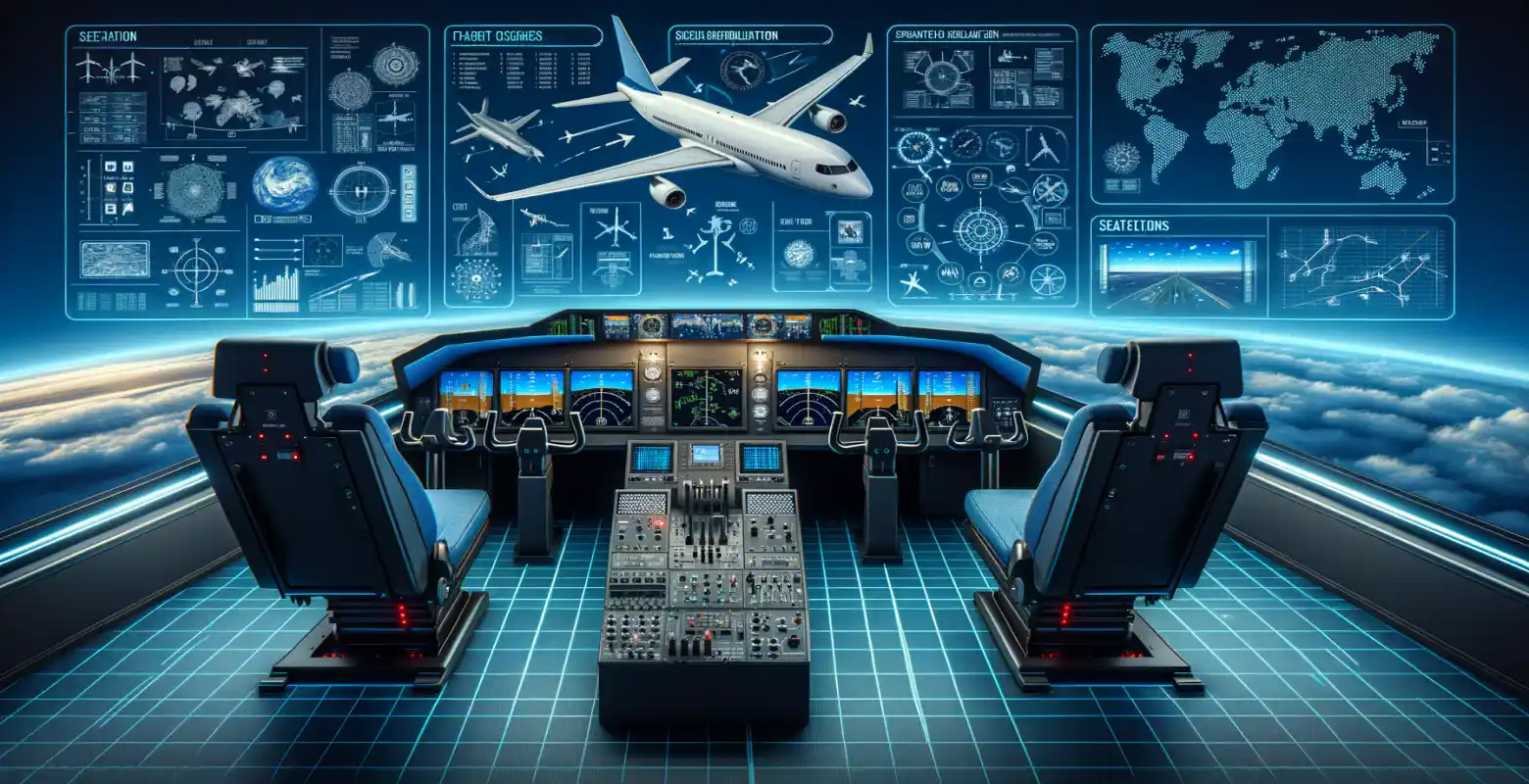Flight simulators - how do they work and what do they offer?
Introduction
Flight simulators play a crucial role in training pilots, aviation enthusiasts, and aerospace engineers. In the era of rapid technological development, these simulations not only support the education process but also contribute to improving flight safety and testing new technological solutions. In this article, we will examine how flight simulators work, what they offer to users, and what their future holds in the context of modern aviation.
How do flight simulators work?
Flight simulators are advanced devices that replicate the conditions of an aircraft flight in a controlled environment. Their main task is to create a realistic piloting experience, which is crucial for effective training. Simulators use advanced computer algorithms, realistic cockpit reproductions, and 3D visualization systems to faithfully represent the reality of flight.
The central computer is the primary component of flight simulators, responsible for processing data and generating simulations. Additionally, visualization systems, often utilizing virtual reality (VR) technology or panoramic screens, are used to recreate the cockpit view. Moreover, simulators are equipped with motion platforms that replicate the aircraft's physical reactions to pilot maneuvers, such as climbing, descending, or turning.
Diversity of flight simulators
Flight simulators can be divided into several categories based on their application and level of sophistication:
1. Professional simulators:Used by airlines and the military for pilot training. They are characterized by the highest level of realism and are certified by international aviation organizations. They offer full cockpit replication and advanced motion simulation systems.
2. Amateur simulators:Designed for aviation enthusiasts and hobbyists. Although less advanced than their professional counterparts, they still provide realistic experiences and the opportunity to learn basic piloting skills.
3. Educational simulators:Utilized in aviation schools and universities, often integrated with educational programs. They allow students to apply theoretical knowledge in practice.
Technical aspects of flight simulators
Flight simulators rely on several key technologies:
1. Simulation algorithms:Responsible for replicating the aerodynamics of the aircraft, atmospheric conditions, and pilot actions. It is crucial for these algorithms to closely resemble reality, requiring advanced mathematical and physical calculations.
2. Visual systems:Provide a realistic environmental image. Advanced simulators use high-resolution screens or VR systems that allow full immersion in the virtual world.
3. Motion platforms:Mechanisms that simulate aircraft movement, such as vibrations, accelerations, or tilts. They enable the pilot to feel the real forces acting on the aircraft.
Advantages and challenges of flight simulators
Flight simulators offer many benefits, but they also come with certain challenges:
Advantages:Simulators allow the safe practice of various flight scenarios, including emergencies, without risking lives and property. They are also more cost-effective than actual training flights and enable the repetition of maneuvers multiple times.
Challenges:One of the main challenges is the need for continuous software and hardware updates to keep pace with technological advancements and changes in aviation regulations. Maintaining a realistic simulation level also requires significant financial investments.
The future of flight simulators
The development of digital technologies, such as artificial intelligence and augmented reality (AR), opens up new possibilities for flight simulators. The future of aviation simulations may include even more advanced visual systems that allow full immersion in a realistic world, as well as the use of AI for analysis and optimization of training processes.
Another direction of development is the integration of simulators with real-time air traffic management systems, enabling even more comprehensive training for pilots and air traffic controllers.
Summary
Flight simulators are invaluable tools in modern aviation training. Their ability to realistically replicate flight conditions contributes to the enhancement of safety and efficiency in the aviation industry. As technologies continue to evolve, we can expect further growth in the importance of simulators in training and aviation operations. For anyone interested in aviation, both professionals and enthusiasts, simulators offer a unique opportunity for learning and skill enhancement without leaving the ground.






Number of comments: 0